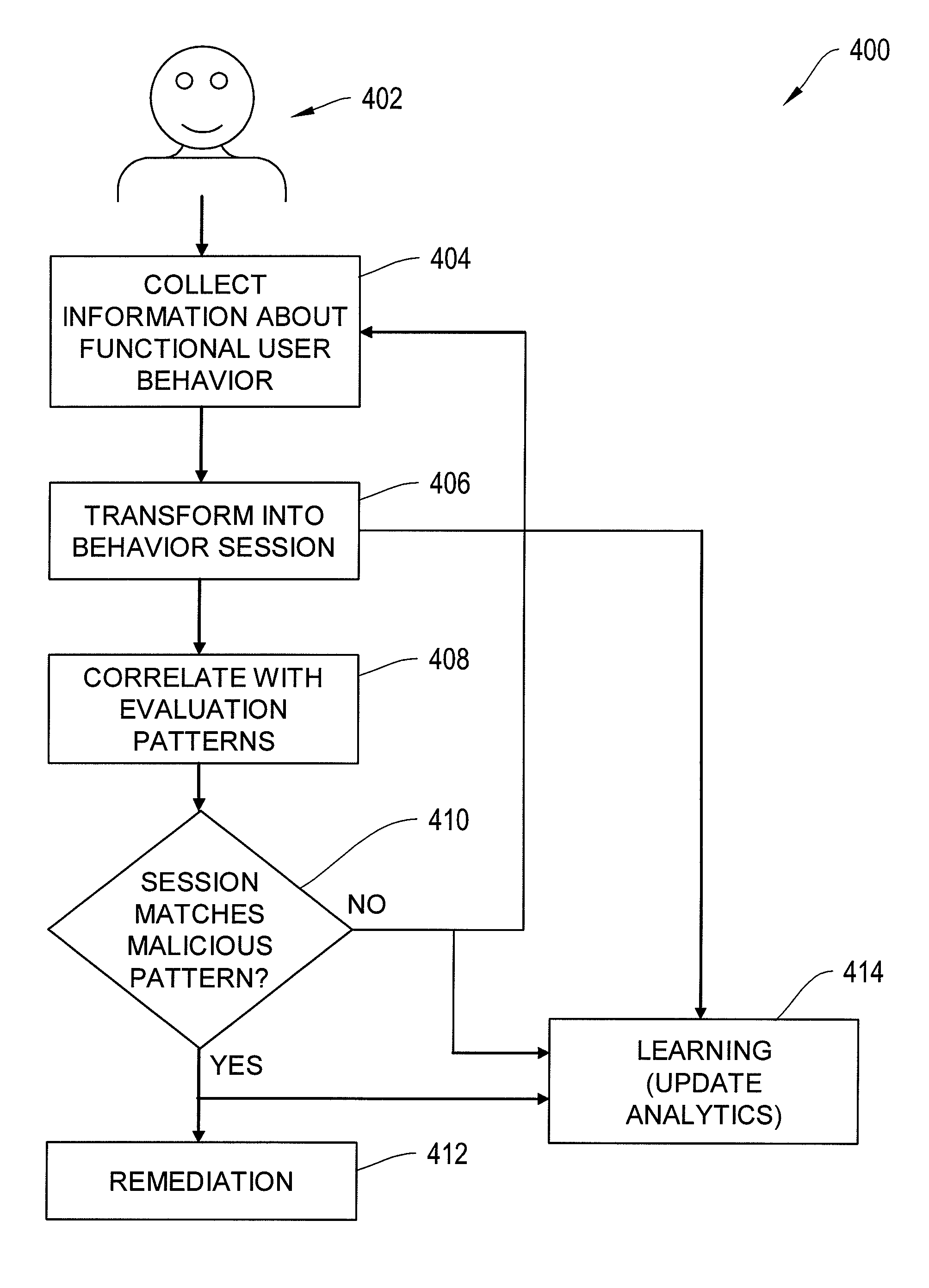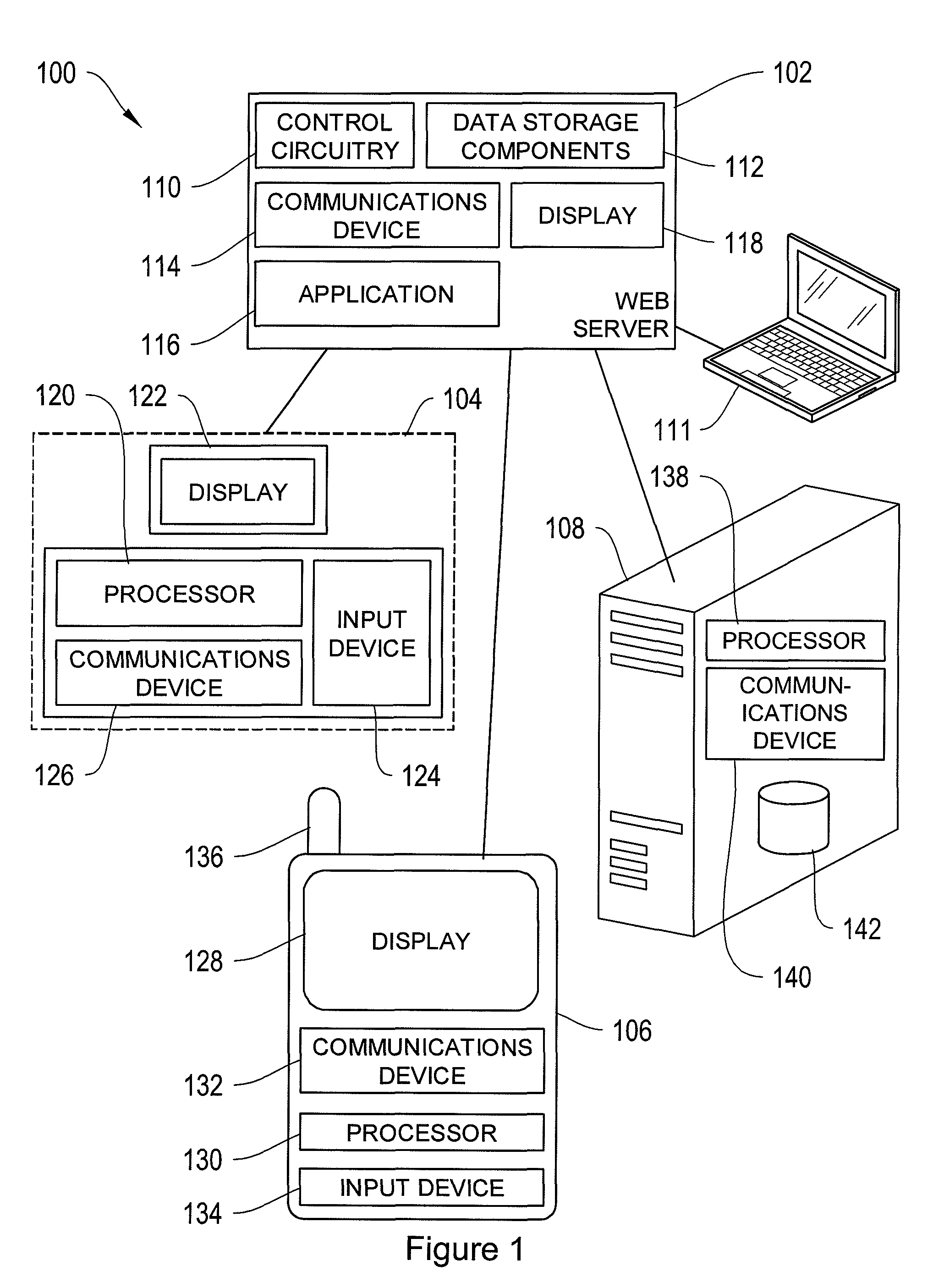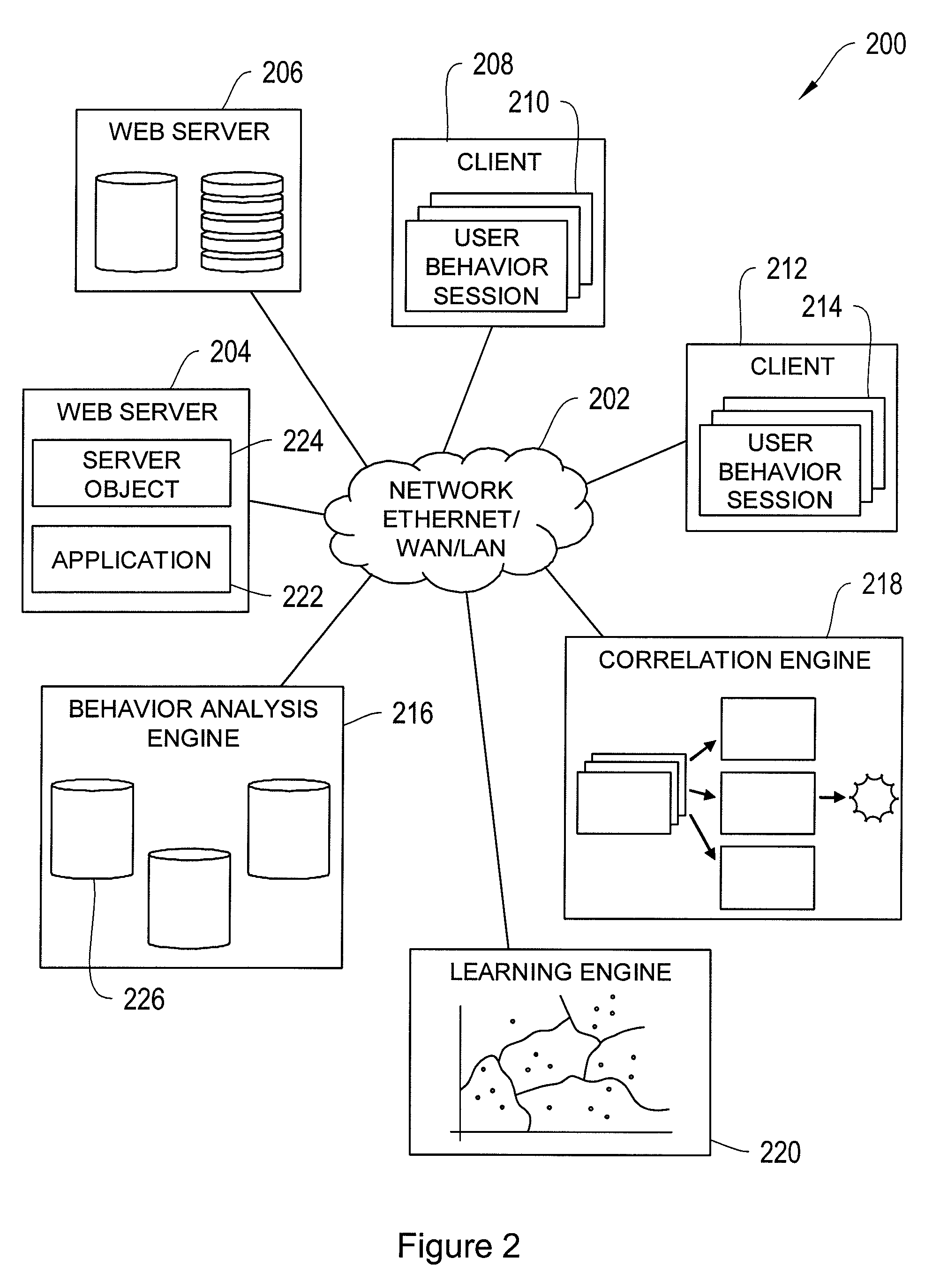Systems and methods for application-level security
a security system and application-level technology, applied in the field of application-level security systems, can solve the problems of denying service, ignoring application-level protection, and growing daily security threats to internet-based commer
- Summary
- Abstract
- Description
- Claims
- Application Information
AI Technical Summary
Benefits of technology
Problems solved by technology
Method used
Image
Examples
Embodiment Construction
[0037]FIG. 1 shows an illustrative web application system 100 in accordance with one embodiment of the invention, implemented as a server-client system. Web server 102 comprises a server computer running a computer program responsible for receiving requests from clients to serve web pages. Web server 102 may comprise control circuitry 110 to send and receive commands, requests, and other suitable data. The control circuitry 110 may be based on any suitable processing circuitry such as processing circuitry based on one or more microprocessors, microcontrollers, digital signal processors, programmable logic devices, etc.
[0038]Web server 102 may also include data storage components 112 for maintaining databases and files. Data storage components 112 may comprise random-access memory or hard disks. Alternatively, the databases and / or files may be stored in a different web server (not shown) from web server 102. Web server 102 may be accessible on the Internet, a local area network (LAN)...
PUM
 Login to View More
Login to View More Abstract
Description
Claims
Application Information
 Login to View More
Login to View More - R&D
- Intellectual Property
- Life Sciences
- Materials
- Tech Scout
- Unparalleled Data Quality
- Higher Quality Content
- 60% Fewer Hallucinations
Browse by: Latest US Patents, China's latest patents, Technical Efficacy Thesaurus, Application Domain, Technology Topic, Popular Technical Reports.
© 2025 PatSnap. All rights reserved.Legal|Privacy policy|Modern Slavery Act Transparency Statement|Sitemap|About US| Contact US: help@patsnap.com



